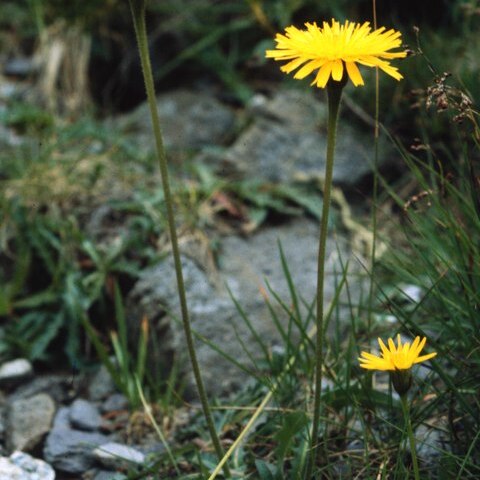Annual to perennial taprooted or tuberous rosette herbs. Hairs eglandular, simple, 2-fid or stellate. Stems scapose or branching. Lvs all basal, undivided to pinnatifid; cauline lvs reduced to small stem bracts, or 0. Capitula solitary or several per stem, on long peduncles. Involucral bracts in 2-several ± distinct series, glabrous or hairy. Receptacle pitted; pits with ciliate margins or glabrous; scales 0. Corolla ligulate, usually yellow, rarely orange, often with red or grey on outer face. Style branches filiform, yellow or discoloured. Achenes numerous, brownish, either the inner beaked or all not beaked; pappus bristles in 1-2 rows, white; outer bristles short and scabrid, or 0; inner bristles longer, usually plumose, sometimes reduced to short scales on the outer achenes.
Fls all ligulate and perfect, yellow; invol ovoid or oblong, imbricate or calyculate; receptacle alveolate or fimbriately villous, not chaffy-bracted; achenes narrow, subterete, several-or many-nerved, long-beaked or merely narrowed upwards; pappus of plumose bristles, sometimes with some shorter outer nonplumose bristles or scales, or that of the marginal achenes wholly of the latter type; lactiferous herbs with well developed basal lvs and a naked or merely scaly-bracted scape, monocephalous, or the heads terminating the several branches. 50, temp. Eurasia.

